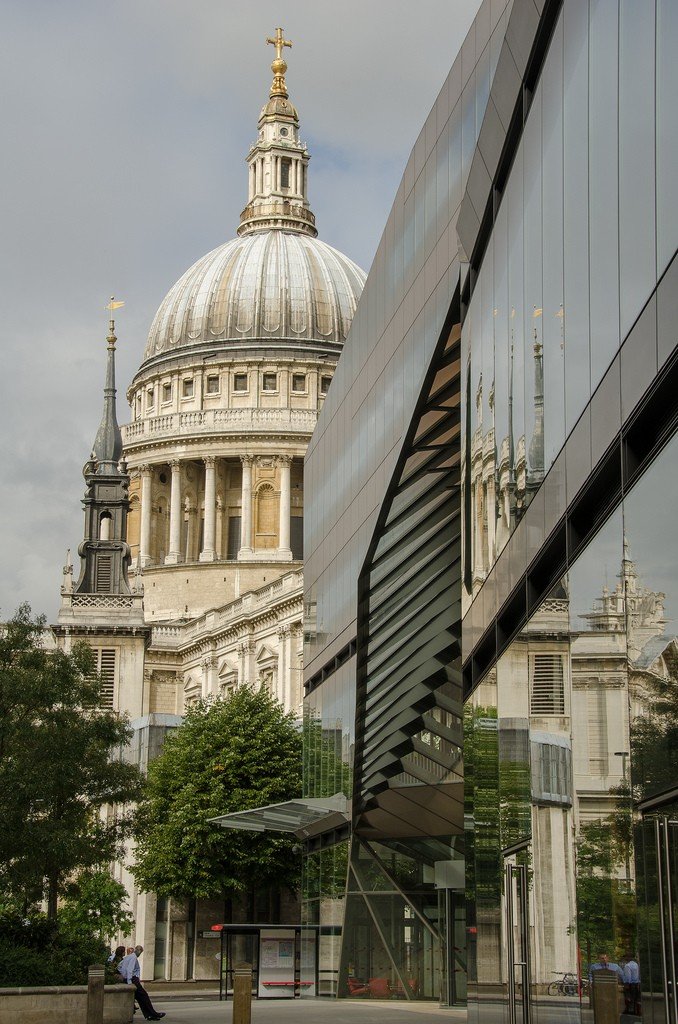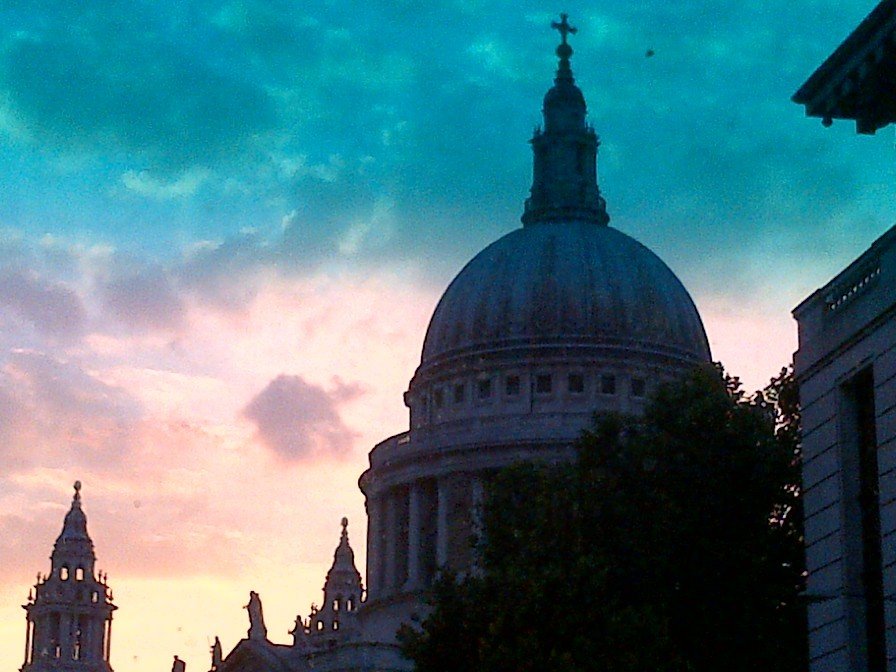St Paul’s Cathedral
St Paul’s Cathedral is a huge cathedral in London, topped with a dome, dedicated to the Apostle Paul, and is the seat of the Bishop of London. The cathedral is located at the top of Ludgate Hill, the highest point in the city.










General information
The west gable, built in 1707, is guarded by two towers; the north one houses the largest bell in Europe, the 17-ton “Great Paul”.
.Wren’s genius was on full display in the new, unusual design of the dome, which is 111 meters high, second only to the dome of St. Peter’s Cathedral in the Vatican. The dome is 478 meters in diameter, including the famous Whispering Gallery. Made of stone and lead, it weighs thousands of tons; 850 tons of which is accounted for by the dome’s lantern.
.Before you go up to the viewing gallery, take a good look at the lower part of the cathedral, where there are beautiful wrought-iron grilles fencing off the choirs. They were made by Jean Tijoux, one of the Huguenot refugees who so enriched the cultural and artistic life of Britain. Another foreigner, the Rotterdam carver Greenling Gibbone (1648-1721), decorated the choir pews and organ railings with carvings based on Wren’s designs.
.Tel: 020-72364128;Closed on Sundays, except for services;Entrance is paid;The nearest metro is St. Paul’s Cathedral.
.
Tombstones
To the left at the entrance is the Chapel of All the Deceased, where stands a dead-pale statue of Lord Kitchener of Khartoum. Above the altar of the chapel is a rarely-seen image of a weeping Virgin Mary.
.
In the north aisle and north transept are famous tombstones to such notable men as Dr. Samuel Johnson and Field Marshal Lord Slim, as well as such forgotten heroes as Major General Andrew Hay, who died at the age of 52, “having shown the diligence, quick decision-making ability and conspicuous bravery of a true soldier”. The painter and sculptor Lord Frederick Leighton (1830- 1896) and the Duke of Wellington (1769-1852) are honored with tombstones.
The Duke of Wellington is buried in the crypt of a huge marble tomb surrounded by lions. And nearby can be seen an image of Florence Nightingale (1820-1910) nursing a soldier, and the hero of the Battle of Trafalgar, Lord Nelson (1758- 1805), lying in a huge black sarcophagus with a rather garish peerage crown. His tomb was originally intended for Cardinal Wolsey in the 16th century, but was seized by Henry VIII and remained unused until 1805, when Nelson was buried in it.
.Dome
Gentle wooden steps lead to a small flight of stone stairs rising to the entrance to the Whispering Gallery, decorated with wall paintings. It offers a beautiful view of the main nave. It was from this location that television broadcast the marriage ceremony of Prince Charles of Wales and 19-year-old Lady Diana Spencer to the world in 1981.
.
From here, a spiral staircase leads up to the Gold Gallery with its small railings. Standing here at dizzying heights, you can see the churchyard, London and the Thames below you.
